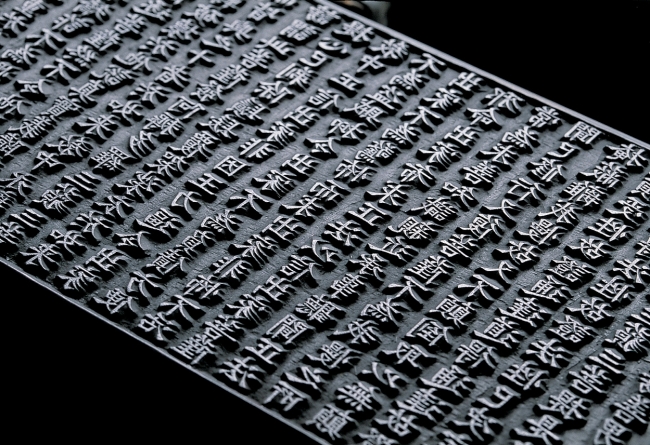Tripitaka Koreana was produced in Namhae, scholars claim
By Korea HeraldPublished : Aug. 27, 2013 - 19:54
The Palmandaejangyeong, or Tripitaka Koreana as it is known in English, was made entirely on the southern island of Namhae rather than Ganghwado Island, as previously thought, a group of scholars said Tuesday.
The groundbreaking study is expected to lead to further research into the 800-year-old Buddhist canon enlisted on the UNESCO Memory of the World register.
According to Park Sang-guk, director of the Korea Cultural Heritage Institute, the wooden printing blocks appear to have been made at a plant on Namhae, South Gyeongsang Province, around 1247, when Goryeo was invaded by the Mongols.
The groundbreaking study is expected to lead to further research into the 800-year-old Buddhist canon enlisted on the UNESCO Memory of the World register.
According to Park Sang-guk, director of the Korea Cultural Heritage Institute, the wooden printing blocks appear to have been made at a plant on Namhae, South Gyeongsang Province, around 1247, when Goryeo was invaded by the Mongols.

The set of 81,258 wooden printing blocks of the Tripitaka Koreana relate to discourses with the Buddha (Sutta-pitaka), regulations of monastic life (Vinaya-pitaka), and commentaries on the sutras by renowned monks and scholars (Abhidhamma-pitaka). They are currently stored at Haeinsa Temple in South Gyeongsang Province.
The Tripitaka Koreana is said to have been produced over a period of 18 years, promoting peace and harmony on the Korean Peninsula and a better life through Buddhism.
It had previously been thought that the wooden printing blocks were made at Seonwonsa Temple on Ganghwado Island, off Incheon, based on the inscription “Daejangdogam” found at the end of each chapter of the canon. Only parts of the series were thought to have been made in “Bunsa Daejangdogam” on Namhae.
However, Park and Choi Byung-hun, an honorary professor at Seoul National University, claimed that the two inscriptions refer to one identical place. They also suggested that Seonwonsa Temple may have served briefly as the storage place for the canon.
“It seems that people created a new name, ‘Bunsa Daejangdogam,’ in order to give credit to Jeongan, who took charge of the later production of the Tripitaka starting in 1243 and engraved it to the later manufactured wooden blocks. ‘Daejangdogam’ and ‘Bunsa Daejangdogam’ are basically the same plant,” Park said at a seminar held on Namhae on Tuesday.
“Namhae was a perfect location for tripitaka production: It was remote, safe from the Mongolian cavalry. The current of the sea was also suitable for the wood from Mount Jirisan to reach to the plant via the Seomjingang River and the sea,” he added.
The seminar, aimed at bringing Namhae to the center of Tripitaka Koreana studies, also discussed several relics including ancient coins, an ink slab and other items that are believed to have been used during the production of the canon.
By Bae Ji-sook (baejisook@heraldcorp.com)
-
Articles by Korea Herald



















![[Today’s K-pop] Treasure to publish magazine for debut anniversary](http://res.heraldm.com/phpwas/restmb_idxmake.php?idx=642&simg=/content/image/2024/07/26/20240726050551_0.jpg&u=)